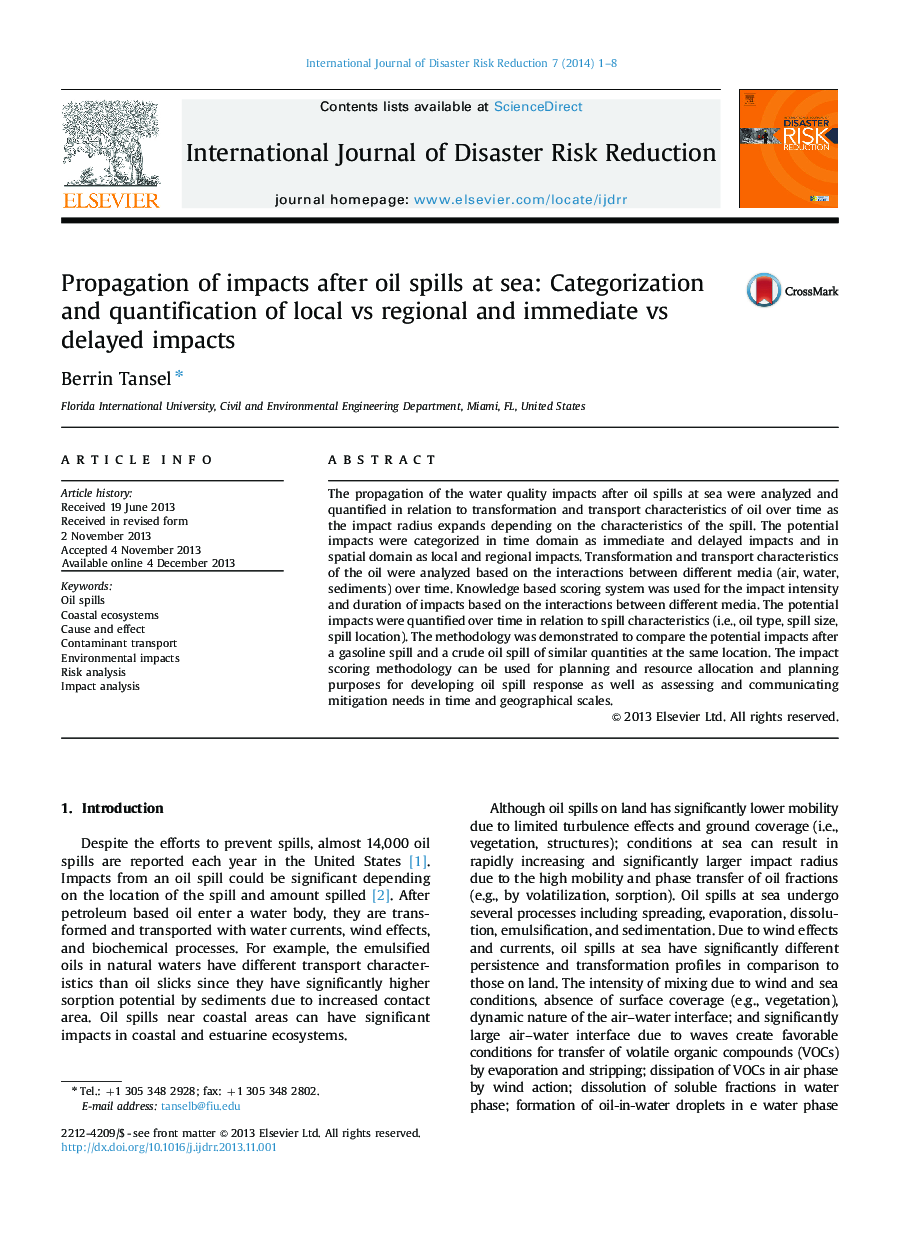| کد مقاله | کد نشریه | سال انتشار | مقاله انگلیسی | نسخه تمام متن |
|---|---|---|---|---|
| 1055228 | 1485167 | 2014 | 8 صفحه PDF | دانلود رایگان |
• A simple methodology was developed for propagation of impacts after spills at sea.
• The potential impacts were categorized in time and spatial domains.
• Time domain was analyzed as immediate vs delayed impacts.
• Spatial domain was analyzed as local vs regional impacts.
• The methodology allows comparison and mapping of impacts after spills and can be used for allocating resources over time.
The propagation of the water quality impacts after oil spills at sea were analyzed and quantified in relation to transformation and transport characteristics of oil over time as the impact radius expands depending on the characteristics of the spill. The potential impacts were categorized in time domain as immediate and delayed impacts and in spatial domain as local and regional impacts. Transformation and transport characteristics of the oil were analyzed based on the interactions between different media (air, water, sediments) over time. Knowledge based scoring system was used for the impact intensity and duration of impacts based on the interactions between different media. The potential impacts were quantified over time in relation to spill characteristics (i.e., oil type, spill size, spill location). The methodology was demonstrated to compare the potential impacts after a gasoline spill and a crude oil spill of similar quantities at the same location. The impact scoring methodology can be used for planning and resource allocation and planning purposes for developing oil spill response as well as assessing and communicating mitigation needs in time and geographical scales.
Figure optionsDownload as PowerPoint slide
Journal: International Journal of Disaster Risk Reduction - Volume 7, March 2014, Pages 1–8
